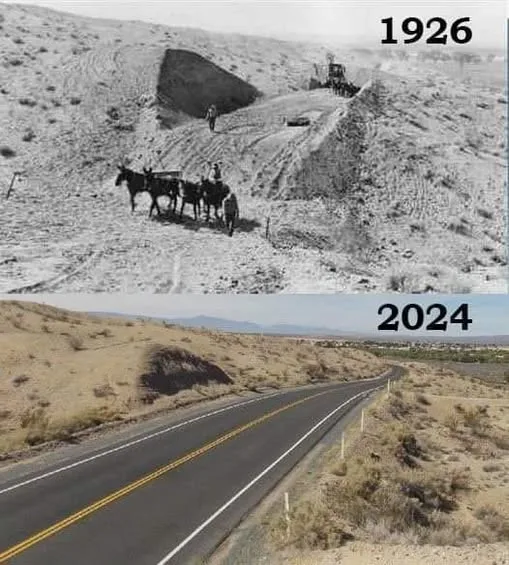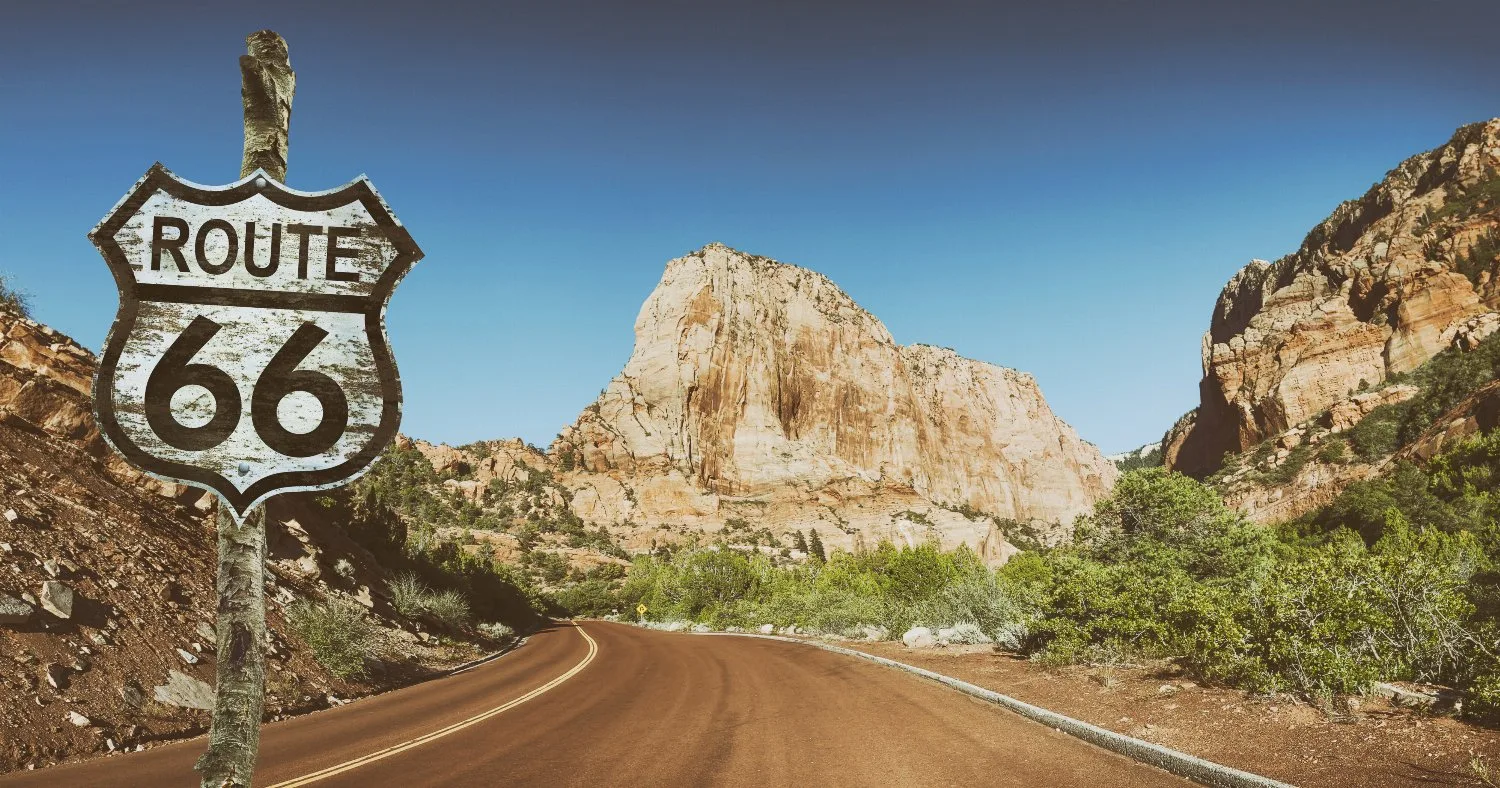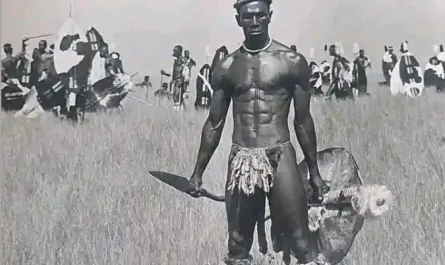U.S. Route 66, affectionately known as the “Mother Road,” is more than just a highway—it’s a symbol of American freedom, adventure, and nostalgia. Stretching 2,400 miles (3,940 km) from Chicago, Illinois, to Santa Monica, California, this iconic road, established in 1926 as part of the U.S. Numbered Highway System, crosses eight states and three time zones. For those who embark on its full length, Route 66 is a three-week odyssey through the heart of America, weaving together vibrant history, quirky roadside attractions, and stunning landscapes. In this blog post, we’ll explore the legacy of Route 66, its cultural significance, key stops along the way, and tips for planning your own cross-country adventure.

The Birth of Route 66
Established on November 11, 1926, U.S. Route 66 was one of the first highways in the U.S. Numbered Highway System, designed to connect rural and urban communities across the country. Running from Chicago’s Lake Michigan shores to the Pacific Ocean in Santa Monica, it spanned Illinois, Missouri, Kansas, Oklahoma, Texas, New Mexico, Arizona, and California. At its peak, Route 66 was a vital artery for migrants, travelers, and dreamers, especially during the Dust Bowl era of the 1930s, when families fled westward seeking opportunity, as immortalized in John Steinbeck’s The Grapes of Wrath.

The highway’s heyday lasted until the 1950s, when the Interstate Highway System began to replace it with faster, straighter routes. By 1985, Route 66 was officially decommissioned, but its legacy endures through preservation efforts, tourism, and pop culture references like the song “(Get Your Kicks on) Route 66” and the animated film Cars.
The Journey: Eight States, Three Time Zones
A full Route 66 road trip covers roughly 2,400 miles, crossing diverse landscapes and climates over three time zones (Central, Mountain, and Pacific). The journey typically takes at least three weeks to savor fully, allowing time for detours, diners, and photo ops. Here’s a snapshot of the states you’ll traverse:
- Illinois: Start at the “Begin Route 66” sign in Chicago, passing through Joliet’s historic Rialto Square Theatre and Springfield’s Abraham Lincoln sites.
- Missouri: Explore St. Louis’s Gateway Arch, the quirky Meramec Caverns, and nostalgic diners in Springfield.
- Kansas: A short 13-mile stretch features the historic Kan-O-Tex Service Station in Galena, now a nod to Cars fans.
- Oklahoma: Home to the longest drivable section of Route 66, with highlights like the Route 66 Museum in Clinton and the art deco cityscape of Tulsa.
- Texas: Cruise through the Panhandle, stopping at Amarillo’s Cadillac Ranch, where ten Cadillacs are buried nose-down in a field.
- New Mexico: Marvel at Albuquerque’s neon-lit diners and the stunning red rock landscapes near Gallup.
- Arizona: Visit the Petrified Forest National Park, Winslow’s “Standin’ on the Corner” statue, and the Grand Canyon (a short detour).
- California: End at the Santa Monica Pier, after passing through the Mojave Desert and Barstow’s Route 66 Mother Road Museum.
Each state offers a unique blend of history, culture, and kitsch, from neon-lit motels to giant roadside statues like the Gemini Giant in Illinois or the Blue Whale of Catoosa in Oklahoma.
Cultural Significance and Nostalgia
Route 66 is more than a road—it’s a cultural touchstone. In the 1930s, it carried Dust Bowl migrants west, shaping America’s narrative of resilience. In the post-World War II boom, it became a highway of leisure, lined with motels, diners, and gas stations catering to families on vacation. Its decline in the 1980s sparked preservation movements, with organizations like the National Route 66 Federation and state historic societies working to restore segments and landmarks.
The road’s mystique lives on in music, film, and literature. Bobby Troup’s 1946 song “(Get Your Kicks on) Route 66” inspired countless covers, while Pixar’s Cars introduced the highway’s charm to a new generation, with Radiator Springs modeled after real Route 66 towns. Today, travelers from around the world flock to the Mother Road, drawn by its promise of adventure and a glimpse of mid-20th-century America.
Must-See Stops Along Route 66
The beauty of Route 66 lies in its eclectic attractions. Here are some highlights:
- Chicago, IL: Kick off at the Art Institute of Chicago or snap a photo at the Route 66 sign on Adams Street.
- St. Louis, MO: Ride to the top of the 630-foot Gateway Arch for panoramic views.
- Tulsa, OK: Visit the Cyrus Avery Route 66 Memorial Bridge, honoring the “Father of Route 66.”
- Amarillo, TX: Spray-paint a Cadillac at the ever-changing Cadillac Ranch art installation.
- Winslow, AZ: Stand on the corner immortalized by The Eagles’ song “Take It Easy.”
- Santa Monica, CA: Celebrate your journey’s end at the “End of the Trail” sign on the Santa Monica Pier.
Don’t miss the quirky: the World’s Largest Ketchup Bottle in Collinsville, IL, or the Wigwam Motel in Holbrook, AZ, where you can sleep in a concrete teepee. Classic diners like the Cozy Dog Drive In (Springfield, IL), birthplace of the corn dog, or the Midpoint Café in Adrian, TX, serve up nostalgia with every meal.
Planning Your Route 66 Adventure
A Route 66 road trip requires planning to balance driving, sightseeing, and relaxation. Here are some tips:
- Time: Allow at least three weeks for a leisurely trip, covering 100–150 miles per day. Shorter segments (e.g., one state) can be done in a week.
- Route: Much of Route 66 is gone, replaced by interstates like I-40 or I-55. Use a guidebook (like EZ66 Guide for Travelers by Jerry McClanahan) or apps to follow historic alignments.
- Season: Spring (April–May) or fall (September–October) offer mild weather and fewer crowds. Summer is vibrant but hot, especially in the desert Southwest.
- Vehicle: A reliable car is key; rentals are common for international travelers. Motorcycles and RVs are also popular.
- Budget: Factor in gas (about 150 gallons for the full route), lodging (motels range from $50–$150/night), and food (diners are affordable, but costs add up).
- Essentials: Bring a camera, GPS, and offline maps, as cell service can be spotty in rural areas. Pack layers for varying climates, from Midwest humidity to desert heat.
Challenges and Preservation
While Route 66 is a beloved destination, it faces challenges. Many original segments are poorly maintained or paved over, and some landmarks have fallen into disrepair. Preservation groups and local communities work tirelessly to restore neon signs, motels, and bridges, but funding is limited. Travelers can support these efforts by visiting historic sites, staying at vintage motels, and donating to preservation organizations.
Conclusion
U.S. Route 66 is more than a highway—it’s a journey through America’s past, present, and heart. Spanning 2,400 miles across eight states and three time zones, it offers a tapestry of neon-lit diners, quirky attractions, and natural wonders. Whether you’re chasing nostalgia, seeking adventure, or simply craving the open road, Route 66 delivers an experience like no other. So, gas up, grab a map, and hit the Mother Road—your three-week odyssey awaits, filled with stories and sights that will linger long after you reach the Santa Monica Pier.
If you’d like tips for a specific state, details on a landmark, or real-time insights from travelers sharing their Route 66 experiences on X, let me know, and I’ll dive deeper!





